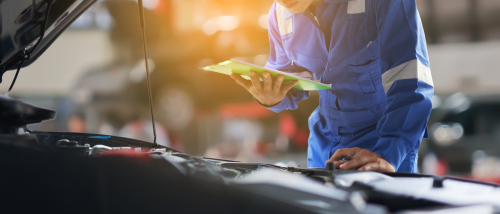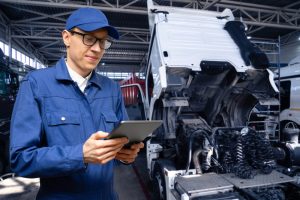Cars are complex yet delicate. They comprise multiple components that require routine checkups and car maintenance to operate smoothly. Like any other machine, cars experience frequent wear and tear over time, so it’s vital to have them inspected regularly to increase their longevity and help them perform well.
Apart from defensive driving and abiding by the laws on the road, knowing how to maintain your car is crucial to keeping yourself and other drivers safe during travels. Doing so decreases the risk of various mechanical issues, including sudden unintended acceleration (SUA), faulty brakes, fuel system issues, oil leaks, overheating engines, and many others.
If you’re unsure how to keep your vehicle in pristine condition, this article will walk you through an extensive list of car maintenance tips.
The Importance of Car Maintenance
Proper car maintenance goes a long way, literally and figuratively.
1. Increases safety
Road safety is your top priority. Whether going out alone or with others, being a responsible driver and car owner means ensuring your vehicle is in prime condition before taking it out for a drive. Prioritizing vehicle safety begins with regular visits to your car dealer for general checkups.
Several inspections occur during car maintenance, including tire pressure, wheel alignment, brake pads, engine oil, transmission, and exhaust systems. Experts recommend getting your car serviced once a year or every 12,000 miles. You can also check the handbook for the service interval, which can vary depending on the vehicle.
2. Helps your car perform at its best
A well-maintained car is a reliable one. You wouldn’t want to drive a vehicle that isn’t in peak form. Although cars don’t last forever, they can last several years if you take the necessary steps to take good care of them.
Making the proper adjustments, such as oil changes, tire replacements, and engine tune-ups, are essential for your car’s optimum performance. Without these, your vehicle is more prone to performance-related issues, which can shorten its lifespan.
3. Saves you money
Cars are expensive investments. Whether you buy a new unit or take out used car loans, there’s a lot to account for, including fuel, insurance, registration, and miscellaneous expenses.
Car maintenance is also on the list of essential expenses. But while car upkeep can be costly, the benefits it provides your car can spare you from shelling out extra money due to delayed servicing and overlooked issues.
4. Reduces fuel consumption
Fuel is one of the most expensive commodities today, especially for the automotive industry. With the growing number of vehicles globally and the high demand for crude oil, fuel consumption is at an all-time high. According to Statista, the global consumption of liquid fuels could reach 102.14 million barrels per day by the end of 2023.
Regular visits to your car service can help improve your vehicle’s fuel efficiency. Car mechanics can assess your car’s fuel system to see if any defects need repairing. This prevents your vehicle from consuming fuel too quickly, resulting in better mileage and fewer trips to the gas station.
5. Keeps your car value high
The condition of your car has a significant impact on its value. Here, regular maintenance is a great way to keep your vehicle in the best state possible.
A well-maintained car is highly beneficial from a mechanical and financial standpoint. For example, refinancing will be easier if you need to update your car loan terms in the future since your car remains valuable despite its age. Similarly, finding the right auto loan enables you to purchase your first car.
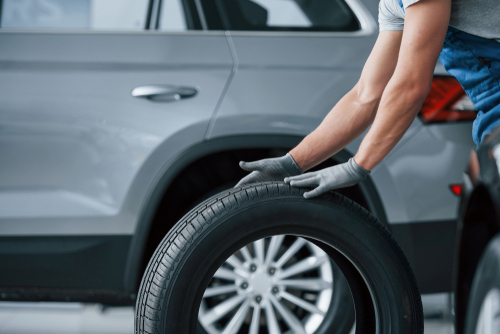
Car Maintenance Basics
Here are essential steps to take in caring for your car.
1. Change the headlights if necessary
Headlights are necessary for clear visibility, especially at night or during inclement weather. Over time, they’ll go out from frequent use, burnout, or wiring problems.
If your car’s headlights are already defective, don’t worry. Lightbulbs are easy to find and purchase. Once you’ve gotten new lightbulbs, replace the old ones by doing the following:
- Turn off your vehicle’s engine to avoid any accidents.
- Go through your owner’s manual to see which lightbulb models are compatible.
- Wear gloves. The skin’s natural oils can cause headlight bulbs to burn out prematurely, even if you wash your hands thoroughly. Choose latex or vinyl gloves to prevent this.
- Open the hood or bonnet and look for the headlight holder near the car’s front.
- Disconnect the power wires. Cars typically have three power wires to remove, which are kept in place by a metal clip, screw cap, or plastic catch.
- Remove the faulty lightbulbs by rotating them to detach them from their sockets.
- To attach the new lightbulbs, insert them into the sockets and put back the headlight holders in place. Make sure to replace the wires taken apart earlier, too.
- Try the new lightbulbs. Switch them on to see if they work correctly.
If you don’t feel confident replacing the lightbulbs alone, contact an experienced friend or a technician to assist you.
2. Check the tire pressure
Driving with flat car tires isn’t ideal. Some dangers of flat tires include structural damage to your vehicle’s wheels and brake alignment, decreased handling, and suspension issues.
Check your car’s tire pressure two or three times a month, especially if you plan a long drive. Do this by using a tire pressure gauge to check how much air there is in each tire.
Tire pressure measurements are in pounds per square inch (PSI). Leave them be if your car’s tires are still within the acceptable PSI range and in shape. If not, get an air compressor and pump them with the right amount of air. Then, you’re ready to hit the road.
3. Replace worn-out wiper blades
Wiper blades are responsible for clearing your windshield of dirt. Whether dried up rain or debris, your car’s wiper blades and the water nozzles keep your windshield clean. However, wiper blades lose their effectiveness as they age, so changing them and purchasing new ones is essential.
To change your car’s wiper blades, follow these steps to guide you:
- Take out the new wiper blades from the box.
- Lift the old wiper blades, turn the blade perpendicular to the arm, and look for the release tab.
- Press the tab and pull each blade down.
- Turn the blades parallel to the arm, then pull them off.
- Revert the process to install the new wiper blades.
4. Monitor the oil level
Engine oil lubricates all the moving parts of your car’s engine. This is a vital component, as it minimizes friction. Without it, the engine’s parts could come into contact with one another, resulting in premature wear and tear and costly repairs.
To monitor the oil level, turn off your car’s engine. Next, open the bonnet, locate the dipstick, and clean it. Once ready, put the dipstick back into the tube.
There are two readings to check on the dipstick: L (low) and H (high). For some cars, the dipstick readings are “MIN” and “MAX.” The oil level is acceptable if the reading is between the two marks. If the oil is lower than the minimum mark, add oil until you reach the right level.
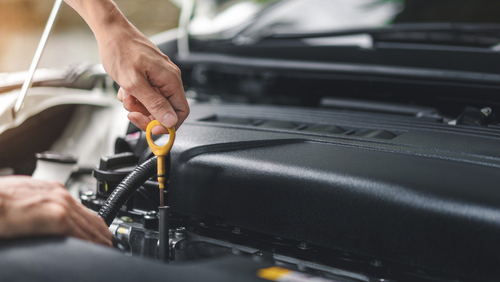
5. Check the tire tread depth
The tire tread is the part of the car tires that touch the road. Unfortunately, driving your car wears out the tire tread, which weakens its grip on the road.
To check your car’s tire tread depth, insert a 1-peso coin facing upright into one of the tire treads. For the old 1-peso coin, the year below it must be covered by the grooves. However, for the new 1-peso coin, the grooves must cover Jose Rizal’s name and necktie. If your tires pass the coin test, there’s no need to change them yet. If not, purchase a new set and install them.
6. Jumpstart the battery if it’s dead
Your car won’t start if its battery is dead. If there are no stores to buy car batteries from, your best bet is to jumpstart your vehicle’s battery. To do this, follow these steps:
- Reach out to someone with a working car to help you.
- Make sure that both vehicles are parked close to each other.
- Have your jumper cables ready.
- Look for the positive (+) and negative (-) battery terminals.
- Connect one red clamp of the jumper cable to the dead battery’s positive terminal and the other to the booster battery’s positive terminal.
- Attach one black clamp to the negative terminal of the booster battery and the other one to an unpainted metal part of the engine.
- Finally, try starting your car.
Once your car’s good, disconnect all the jumper cables properly. Make sure to keep the metal clamps from coming into contact with each other to avoid accidents.
7. Check the engine air filter
The engine filter is a barrier between the air intake system and other parts of the engine. Its purpose is to prevent dirt, dust, and other foreign particles from entering the engine and damaging it.
To check the engine filter, follow these steps:
- Open the hood.
- Locate the air filter in a plastic box with a hose.
- Detach the metal clips on the sides of the box to open it.
- Remove the air filter and inspect it closely to see if you need a new one.
- If the air filter is full of dirt, replace it with a new one.
- Close the hood afterward.
8. Refill the windshield washer fluid
Windshield washer fluid works together with the windshield wipers for effective cleaning. But, like fuel, it depletes over time when used frequently. Once your car’s windshield washer’s fluid goes empty, here’s how to refill it:
- Open the bonnet or hood.
- Look for the windshield wiper fluid container, a brightly colored plastic cap with a windshield logo etched on it.
- Remove the lid and store it in a safe area.
- Open the pack of windshield wiper fluid and pour it into the container until it reaches the fill line.
- Cover the windshield wiper fluid container once you finish filling it up.
- Close the bonnet.
- Test the windshield wiper fluid to see if it works well.
9. Clean the car
Cleaning your car is the simplest task to carry out. Your only concern is removing dirt from the outside and inside to keep it squeaky clean and presentable. To clean your car thoroughly, you’ll need the following:
- Pressure washer
- Car wash soap
- Car polish
- Sponge
- Dry cloth or towel
Start by using the pressure washer on your car. Apply the soap all over, especially on parts where dirt is difficult to remove. After covering all dirty areas, carefully wash them. Next, wipe your car with a dry cloth or towel. For the final touch, add wax and polish to give your vehicle some shine and extra protection.
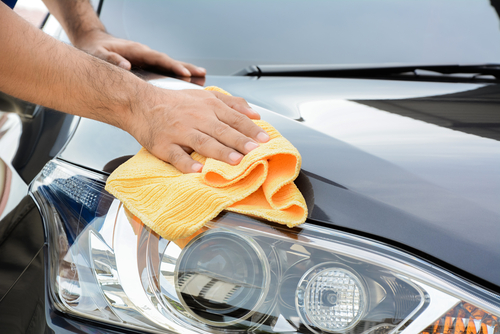
Car Maintenance Tips
These DIY tips are easily doable even without a car care professional.
1. Feed your car the right fuel
Some cars run on gasoline, and others on diesel. Depending on your car type, fill it up with the appropriate fuel. Using the wrong fuel type can prevent your car from starting because the engine cannot combust that type of fuel. Fixing this would require fuel drainage, which is expensive on its own, in addition to wasted fuel.
2. Fill your car with the right kind of oil
Similar to fuel, different cars run on different oil types because their compatibilities differ. Filling your vehicle with the wrong oil can result in poor lubrication, transmission failure, or any other irreversible damage. Conversely, filling your car with the correct oil type will keep its engine properly lubricated and free of mechanical failure.
3. Check your brakes
Brake inspections allow mechanics to address minor issues, eliminating the chances of them turning into severe ones. You can’t afford to drive a car with faulty brakes, as they drastically lessen your control over the vehicle and jeopardize others’ safety.
4. Align your suspension
Proper suspension alignment enables even pressure distribution on your car’s tires. Driving over bumps, potholes, or curbs alters your car’s suspension alignment, causing your car to put more pressure on the tires than needed. Consequently, your ride comfort and the engine’s fuel efficiency are compromised, leading to a dangerous driving experience.
Having your car’s suspension realigned regularly is vital to avoid further mechanical problems. Most importantly, proper suspension alignment provides your vehicle with excellent mobility for a smooth, bump-free ride.
5. Rotate your wheels
Suspension alignment isn’t enough. Your car’s wheels must also be aligned correctly to prevent them from wearing out unevenly. Schedule the alignment on your car wheels every six months or after a minor accident where misalignments could occur. If left untreated, improper wheel alignment can lead to premature tire replacement. As such, it’s best to keep your car’s wheels aligned and balanced well for maximum ride comfort and ease.
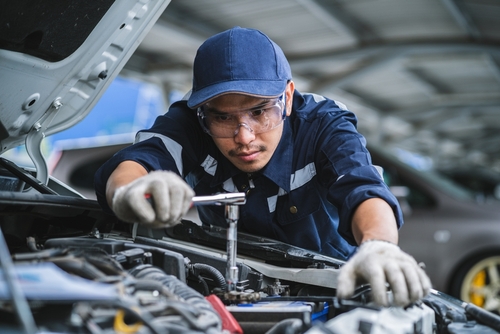
Professional Car Maintenance Procedures
There are several areas you must examine with your car maintenance provider.
1. Check all car fluids
Ensure your car has the right amount of fluids, including engine oil, brake, windshield washer liquid, coolant fluid, and transfer case fluid.
2. Examine the hoses and belts
Check for any cracks, signs of wear and tear, and loose ends before driving your car.
3. Check the battery
Inspect the battery for any corrosion, loose cables, or other defects. If there are malfunctions, replace the battery immediately.
4. Inspect the exhaust system
Try to locate any leaks, cracks, broken supports, or other signs of damage.
5. Schedule a tune-up
Bring your vehicle to the nearest car service and have the engine tuned for improved power output, fuel economy, and lower emission levels.
6. Check the heating, ventilating, and A/C systems
Check if your car has proper ventilation in all parts. Test if the AC and heating systems provide sufficient cooling and heating throughout the vehicle.
7. Inspect the steering and suspension system
The steering wheel has to have the right amount of steering fluid to keep it moving correctly. Look at the coil springs and dampeners, then assess if they need replacement.
8. Check the wipers and lighting
Test the windshield wipers to see if they’re effective. Turn on the headlights and check if they produce bright enough beams.
Maintain Your Car Regularly to Keep It in Tip-top Condition
Preventive car maintenance can’t be stressed enough. It doesn’t matter if you drive a low-, mid-range, or high-end vehicle. All of them are susceptible to mechanical breakdowns and problems, so keeping these to a minimum entails regular car service trips to keep your vehicle in the best form possible.
AsiaLink Finance is one of the leading providers of online loans in the Philippines. Offering an extensive selection of loans through a hassle-free application process, a one-day approval policy, and competitive interest rates, we aim to provide you with quality and seamless financial services that cater to your needs.
Dreaming of a new car? Apply now for an auto loan!
- 7 Credit Score Myths DEBUNKED! - April 29, 2024
- How to Talk about Money with Your Partner: 7 Tips - April 24, 2024
- Truck Maintenance Checklist: 14 Ways to Keep Your Truck in Top Shape - December 20, 2023

